The Catholic Diocese of Erie is restructuring parishes again. Here's what you need to know
Seven years after it last undertook a major restructuring, the Catholic Diocese of Erie is launching another plan to reshape its parishes.
The project is in its early stages, as Bishop Lawrence T. Persico said in a letter to the faithful earlier this month on the process, known as pastoral planning.
"My goal in beginning another more formal round of pastoral planning for parishes, is to create communities that are vibrant and dynamic and in a position to extend a sense of welcome and belonging to all," Persico said in his introductory letter on the planning, dated April 10.
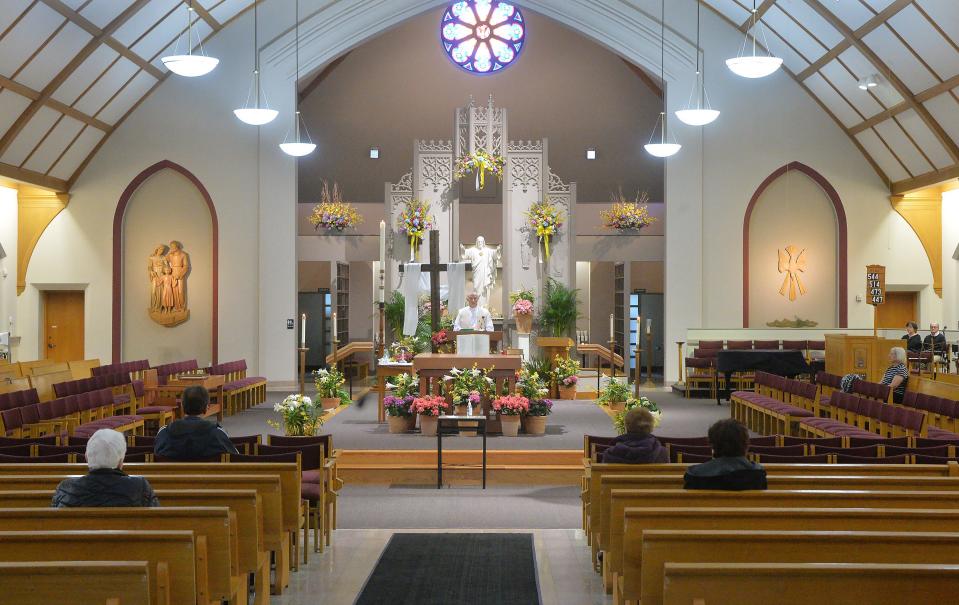
Persico, who has led the 13-county diocese since October 2012, said the latest restructuring is necessary to address the same issues that the region's Catholics were dealing with in 2016 — declining population in general in northwestern Pennsylvania; declining attendance at Mass; and a persistent priest shortage.
From 2016: Closings, mergers, partners part of Erie Diocese parish plan
The numbers have continued to drop, forcing the diocese to act, Persico said. He said the restructuring could lead parishes to partner or merge to share priests and could eventually lead to parishioners choosing to close some church buildings.
"Basically we have to work at right-sizing the diocese based upon the number of parishioners as well as the number of clergy," Persico said in an interview. "We have fewer parishioners than we did and fewer clergy. So that all has to be kept in perspective."
"We're on a threshold of change," Persico also said. "You have two options. One is be agents of change. Or be victims of change. If you want to be a victim of change, you can sit there and go woe is me. An agent of change is looking for new possibilities to move the faith forward."
In 2016, when it completed its last restructuring plan, the diocese had 116 parishes and 141 church buildings. The planning started in 2014 and the final proposals were effective in 2017. The diocese said it now has 93 parishes and 127 church buildings.
More from 2016: Erie diocese releases parish plan
Under the last restructuring, parishes partnered or merged. Partnering means two or more distinct parishes sharing a pastor. They are also asked to share staff and an office.
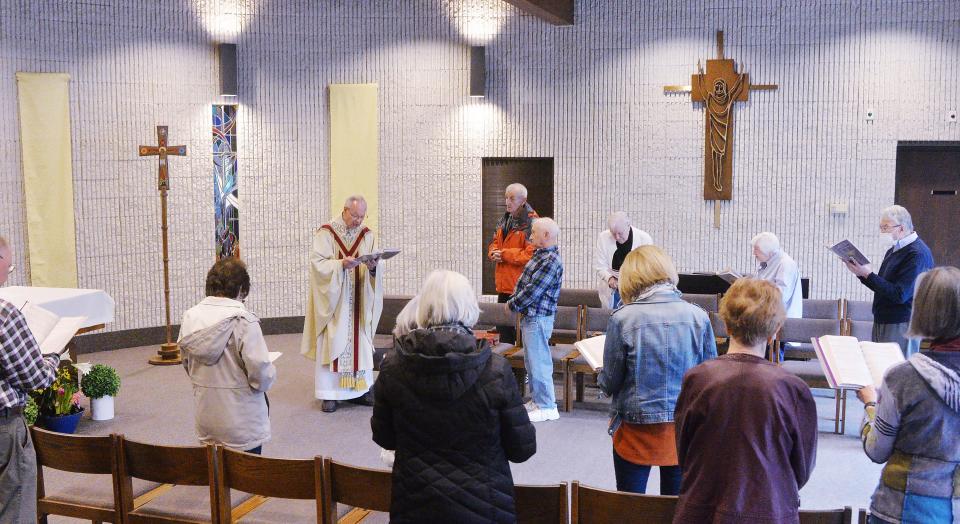
Merging is when two or more parishes become one. In the Erie diocese, merging has most commonly occurred with one parish absorbing another. Typically, the church building from the absorbed parish becomes a “secondary church” of the absorbing parish and doesn't always continue to have regular Sunday Masses. A merger doesn't mean the automatic closing of buildings, although some secondary churches have closed.
What are the numbers that back up the need to restructure?
The core figure that the Catholic Diocese of Erie uses to gauge its size is known as the October count. It is based on the headcount of Sunday Mass attendees that parishes report to the diocese in October. Sunday Mass includes Saturday evening services.
In 1990, the October count was 120,000 people. It was 52,113 in 2012 and 26,770 in 2022.
From 2015: Erie Catholic leaders see possibilities in pastoral planning process
The diocese also relies on population figures for the 13 counties it serves in northwestern Pennsylvania. The general population was 875,200 in 1990, 855,252 in 2012 and 813,513 in 2022, according to the diocese.
"While the population in the 13 counties of our diocese has dropped by about seven percent since 1990, the number of Catholics who attend Mass on Sunday has dropped by 78 percent," Persico said in his letter. "I understand the pandemic hastened some of this decline. But that does not change our situation."
Other data from the diocese:
Parishes: 127 in 1990, 117 in 2012, 94 in 2022 and 93 in 2023.
Churches outside Erie County with Sunday Masses: 107 in 1991 and 82 in 2023, a drop of 23.4%.
Churches in Erie County with Sunday Masses: 40 in 1991 and 35 in 2023, a decline of 12.5%.
Active priests in the diocese: 210 in 1990, 130 in 2012, 99 in 2022 and 92 in 2023. The number is expected to be about 60 priests by 2031.
How unique are the challenges facing the Catholic Diocese of Erie?
The diocese is developing its restructuring plan at the same time overall membership in religious institutions in the United States has continued to decline.
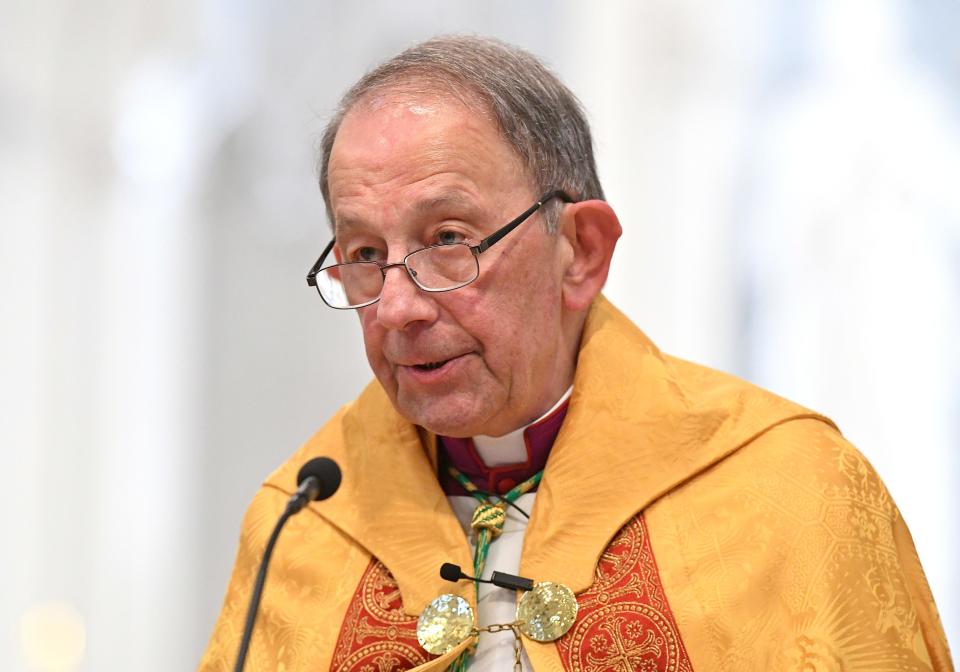
In 2020, the percentage of Americans who said they belong to a church, synagogue or mosque fell to 47%, according to Gallup. The pollster said the figure marked the first time church membership in the United States had fallen below 50%.
The percentage of Americans who said they belonged to a church, synagogue or mosque was 50% in 2018 and 70% in 1999, according to Gallup.
From 2020: Effects of parish restructuring are still playing out across the Catholic Diocese of Erie
Gallup has also found that church attendance has generally declined from childhood to adulthood, a move away from more consistent churchgoing habits of previous generations, according to a Gallup report in December.
The declines related to church membership, Gallup also said in the December report, "come at a time when increasing proportions of Americans do not identify with any religious faith. Across all of Gallup’s polling in 2022, an average of 21% of U.S. adults, up from 8% in 2000, say they have no religious preference. But Gallup has also found that religious Americans today are less likely than those in the past to belong to a church or to regularly attend services."
Among Catholics, Gallup has found that the clergy sex-abuse scandal has played a role in the erosion of membership. Gallup released its findings on the topic in March 2019 amid new investigations into clergy sexual abuse in the Catholic Church, including the August 2018 grand jury report on the church in Pennsylvania.
"As the Catholic church responds to more allegations of sexual abuse of young people by priests, an increasing percentage of Catholics are re-examining their commitment to the religion," Gallup said in its March 2019 report. "Thirty-seven percent of U.S. Catholics, up from 22% in 2002, say news of the abuse has led them to question whether they would remain in the church."
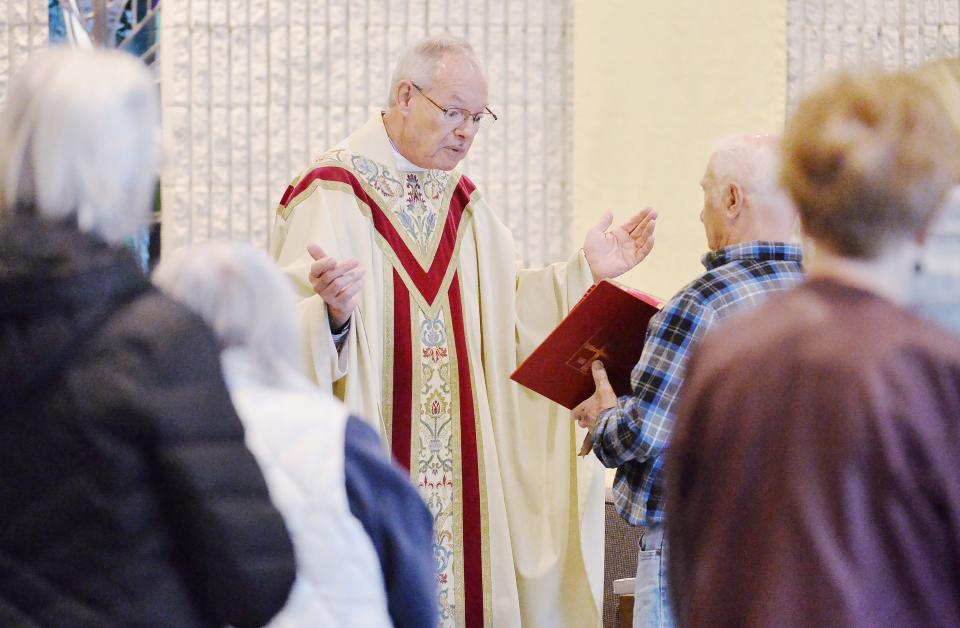
The hope in the Catholic Diocese of Erie is that the church can find ways to increase the number of the faithful even as it plans to reduce the number of churches, said the Rev. Mark O'Hern, the pastor of three churches in the city of Erie: Sacred Heart, 816 W. 26th St.; St. Andrew, 1116 W. Seventh St.; and St. Paul, 1617 Walnut St. The parishes partnered as part of the 2016 diocesan-wide restructuring.
Previous pastoral planning: Erie diocese plan focuses on future of parishes
"Significant restructuring is necessary to re-balance our declining resources with our declining needs, but down-sizing alone does little to address the cause of the decline," O'Hern said about the latest restructuring in a email. "There is hope, but no certainty, that the institution of the Church will be able to understand and resolve the mass exodus the people of God have taken."
The partnership among the three churches that O'Hern serves means they share a priest and hold services at times that do not overlap, among other efforts to share resources. The three churches considered consolidating, but put the proposal on hold in December 2021.
Changes coming: More mergers part of talk about future of parishes in Catholic Diocese of Erie
The latest restructuring is likely to raise the issue of consolidation once more among Sacred Heart, St. Andrew and St. Paul. In an interview in January 2022, O'Hern said a decision was made to maintain the status quo at his three parishes while keeping an eye out for any other changes that might be coming for Catholic churches in Erie.
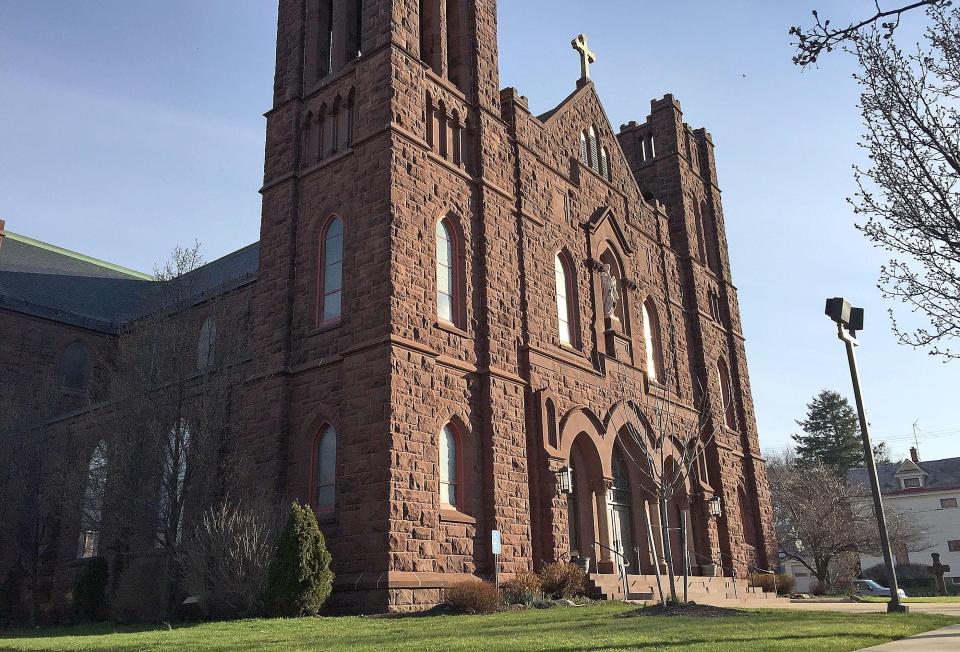
What will the restructuring affect? What about schools?
The restructuring does not include schools, Persico said. The diocese restructured its school system as part of the 2016 planning process.
The diocese replaced independent parish schools in the Erie area with a single system containing multiple campuses with prekindergarten through fifth grade and middle schools for grades six to eight. Three schools closed.
Changes at school: Diocese reveals final plan for Erie-area Catholic schools
Persico said the new round of pastoral planning will focus on parishes.
The planning process is just getting started for parishes in Erie County and other areas of the diocese. Persico held a meeting with priests and lay leaders in Erie County in late March to explain the pastoral planning process. His April 10 letter is the first in a series of letters that will outline how the process will occur in Erie County and elsewhere.
The planning process is farther along in other areas of the diocese.
The diocese has already proposed changes in three regions — the Bradford Deanery, the Clearfield Deanery and the Oil City Deanery. The options include partnering some churches and eliminating Sunday Mass at other churches. Many churches would see no changes under the proposals.
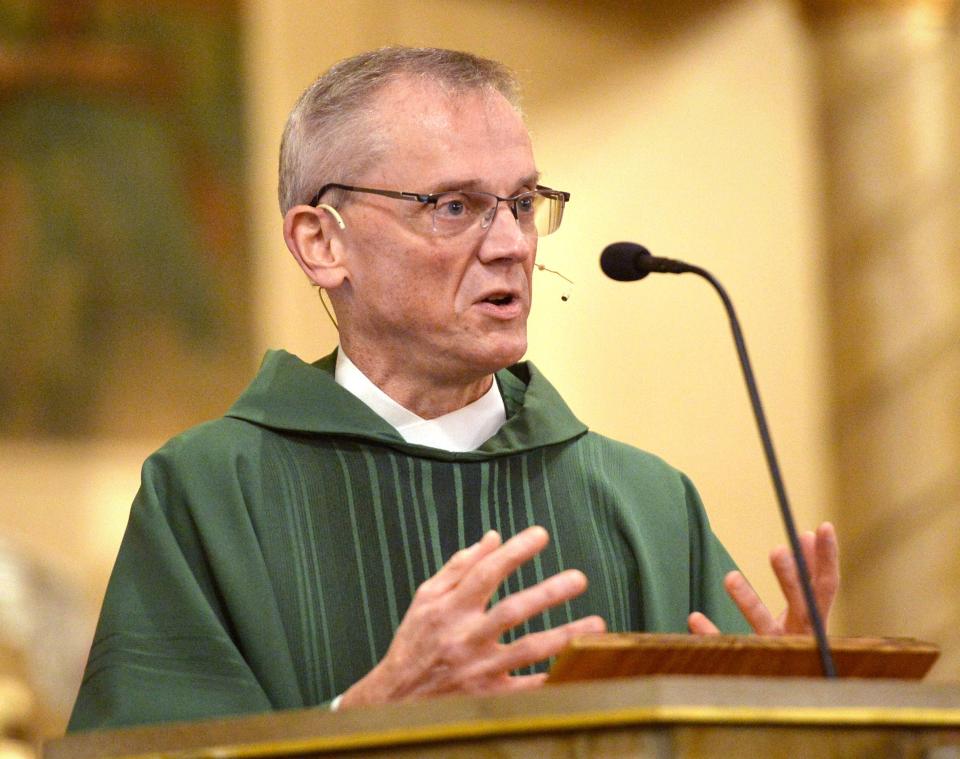
The diocese is seeking feedback from parishioners and clergy in those deaneries and hopes to make decisions this coming summer. Persico said the diocese administration will rely on the input of parishioners and priests before he consults with the diocese's priest council to make the final decisions.
"There are two ways I could do this," Persico said. "One, I can take a plan to the priest council, let them look at it, and if they agree and sign off on it, I implement it. That means I don't need input of anyone else.
Earlier move: Meadville's 3 Roman Catholic parishes to merge into 1 new parish, Epiphany of the Lord
"I prefer a process where we will go into a region, a deanery, and say, here is a proposal for a preliminary plan. What we want you to do is take it back to your people to review it. We get all this feedback from the people that it's going to affect as well as the clergy. And then we take all of that, and then go through it. And then we make the final plan.
"What happened in 2017 was some of the recommendations by the people were better than the recommendations we made. So we implemented them."
Persico said he has not set a date for when he will make all the final decisions on the restructuring.
"I don't like to be held to a deadline where you're dealing with people and facts and some things you have no control over," he said. "So when you say this is the deadline, and then a number of factors step in to change that, it doesn't help. And I don't like to implement something that I'm unsure of."
What is the goal of the latest restructuring?
Persico said he wants the diocese to reach a size where its number of parishes matches its number of priests and other resources. At 72 years old, Persico is three years away from mandatory retirement age as a bishop, and he has also said he wants to leave the diocese in a strong position for his successor.
Taking stock: Challenges and 'a lot of hope': Persico reflects on 10 years as Erie's Catholic bishop
"We have been doing pastoral planning since about 2014," Persico said. "And back at that time, I was meeting on a regional level and I explained to the people after we put out the final plan that this was not the end of pastoral planning.
He said the "right-sizing" of the diocese is grounded in the Catholic Church's teachings.
"We have to follow the Gospel command of Christ: Go out and teach all nations. Be missionaries," Persico said. "He didn't tell us to go out and maintain buildings. So when we spend all that time on buildings, we're forgetting people.
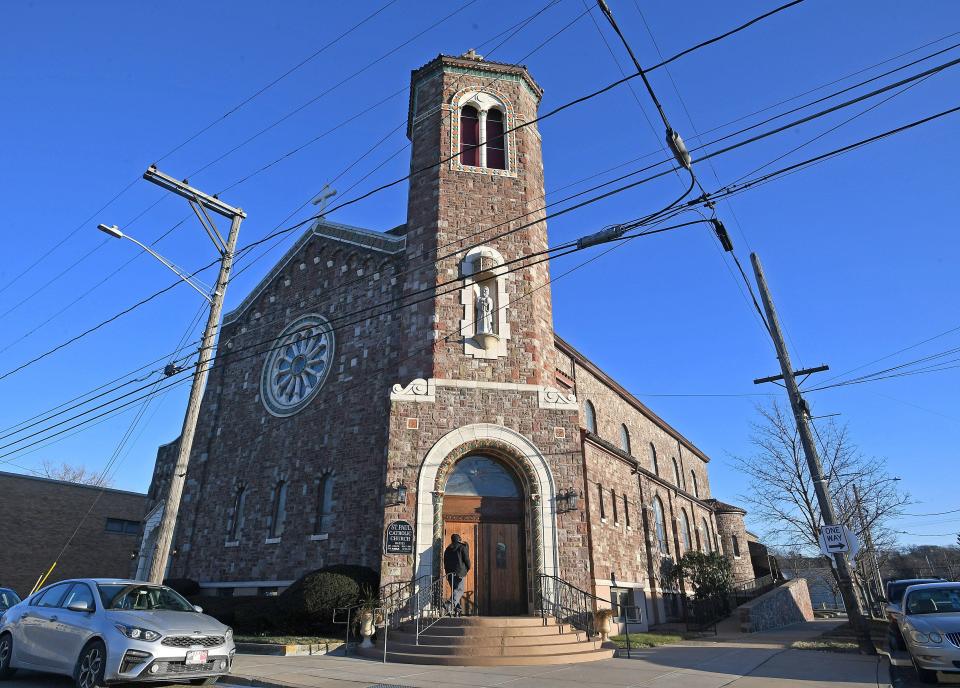
"The other thing is, when we do have these partnerships or merging, that affords the opportunity to start creating vibrant parishes, parishes that are alive. If you go to a Sunday Mass, one ... pastor told me they're lucky if they get 45 people. Or you go to another parish and everybody's all spread out. It's like you're offering Mass by yourself."
"But when you can do this," Persico said, referring to the restructuring, "you can bring people together. So it would be a real celebration.
"And then hopefully that would lead to good works. And good works would mean being a missionary."
"We have to be mission-oriented. Why do we exist as a church? And that's to proclaim the Gospel," Persico said. "And unless we come together as a stronger group, then we're not doing the mission. We're maintaining status quo."
Contact Ed Palattella at epalattella@timesnews.com. Follow him on Twitter @ETNpalattella.
This article originally appeared on Erie Times-News: Catholic Diocese of Erie is restructuring parishes again. Here's why

